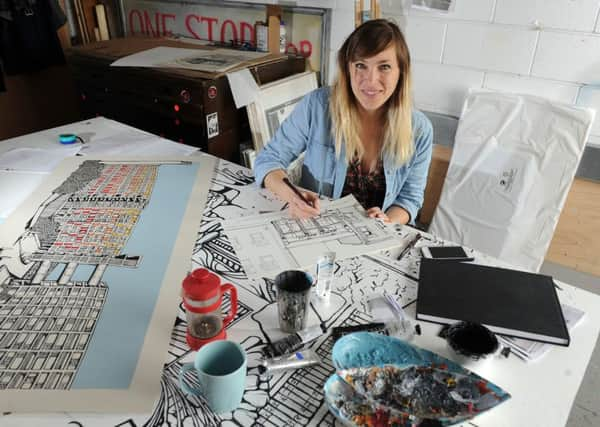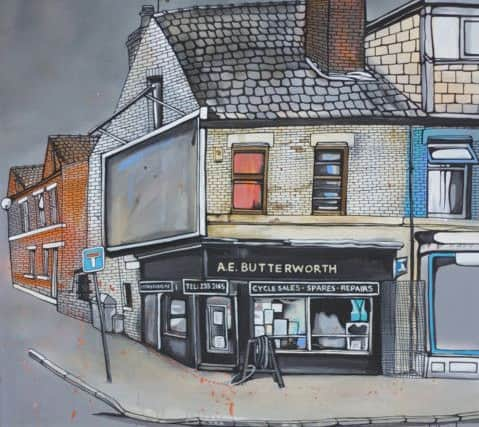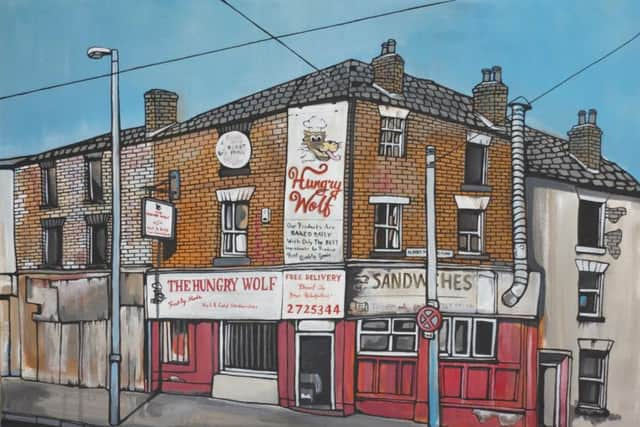A rough guide to Sheffield


The poem contrasted Sheffield’s industrial past with its post-industrial Eighties reality. And “City on the Move”? An ironic reference to a cheery 1970s promotional film that later found fame as the opening sequence of box office smash The Full Monty.
The poem, by the eight-year-old Jo and her classmates at inner-city Sharrow Junior School, pointed up the city’s contrasts. On the one hand, there were such supposedly positive ventures as new shopping centres and the sports stadia being built for the 1991 World Student Games. On the other, there was no shortage of negative images of recession – dwindling jobs, closing factories, boarded-up flats.
Advertisement
Hide AdAdvertisement
Hide AdThe contrasts are further explored in the exhibition at Sheffield’s Millennium Gallery. It compares the city’s post-industrial experience with that of Pittsburgh, its US counterpart as a steel city – a term Jo wants to reclaim as positive rather than as a melancholy reminder of faded glory or failure.


“I wanted to see how much of a city’s identity is founded on its history,” she says. “The sense of pride was something I wanted to focus on.”
We’re at Persistence Works, one of four sites across the city run by Yorkshire Artspace, which rents studios to 150 artists and craftspeople. Jo’s studio overlooks busy Supertram lines and sleek modern buildings, but her work explores an older city, infused with its industrial past.
Her Sheffield is an uncompromisingly urban place of industrial pipes, traffic lights and telegraph wires, brick-built for the most part, sometimes rundown, never nostalgic. These meticulous, boldly outlined architectural studies make no attempt to disguise or glamorise. If a shop is boarded-up, she paints it boarded-up. If half a hoarding on the side of a building is missing, she doesn’t fill it in. Wall plaster is left peeling.
Advertisement
Hide AdAdvertisement
Hide Ad“People say ‘Why do you draw such ugly buildings?’” Jo says. “But I don’t see them as ugly. I can’t just draw any old abandoned building; it’s got to have a history. I try to find the character of buildings and a new building hasn’t necessarily got that. I immerse myself in an environment.”


The immersion also took in Pittsburgh. Jo spent a fortnight there, filming interviews with residents about their attitudes to their city. She has interwoven them with similar interviews with Sheffielders to create an 80-minute documentary that forms part of the exhibition.
Both groups talked a great deal about the work ethic, the changes caused by the decline of the industry that traditionally defined them, their pride in that industry, and the friendliness of the local community. But there was a difference in tone. Pittsburghians were characteristically outgoing, whereas, says Jo, “people in Sheffield were self-deprecating and afraid to blow their own trumpets. This is often described as an inward-looking city. People think that’s its downfall, but to me that gives it its character and personality.
“It’s a friendly, strong community. And if someone criticises Sheffield, it’s like slagging off your mum.”
Advertisement
Hide AdAdvertisement
Hide AdJo, who has no family background in steel, recently returned to Sheffield after 15 years away – at art college in Falmouth, then staying on in Cornwall and moving to London. “The area of London where I was living – Bethnal Green – was being gentrified and I couldn’t afford it,” she says. “I wanted to carry on working as an artist, not doing adverts to earn 60 or 70 grand a year just to scrape by in London.”
She now lives just a few hundred yards from her old school, a few hundred more from the house where she grew up: a very Sheffield image of community and continuity.
That’s also reflected in what’s likely to be one of the most popular pictures in the exhibition: of the factory that makes Henderson’s Relish, a Sheffield institution.
As Jo says: “There aren’t a lot of cities that feel passionate about a sauce.”
Steel City, City on the Move, Millennium Gallery, Sheffield, to October 11; www.museums-sheffield.org.uk.